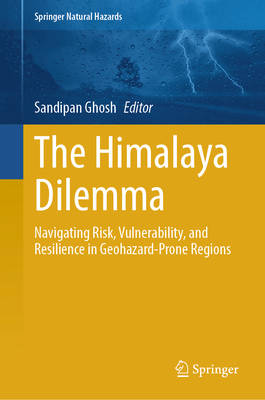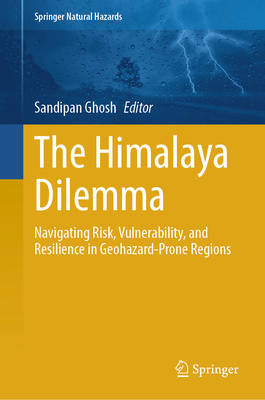
Je cadeautjes zeker op tijd in huis hebben voor de feestdagen? Kom langs in onze winkels en vind het perfecte geschenk!
- Afhalen na 1 uur in een winkel met voorraad
- Gratis thuislevering in België vanaf € 30
- Ruim aanbod met 7 miljoen producten
Je cadeautjes zeker op tijd in huis hebben voor de feestdagen? Kom langs in onze winkels en vind het perfecte geschenk!
- Afhalen na 1 uur in een winkel met voorraad
- Gratis thuislevering in België vanaf € 30
- Ruim aanbod met 7 miljoen producten
Zoeken
The Himalaya Dilemma
Navigating Risk, Vulnerability, and Resilience in Geohazard-Prone Regions
€ 168,95
+ 337 punten
Omschrijving
The Himalaya Dilemma: Navigating Risk, Vulnerability, and Resilience in Geohazard-Prone Regions is a collaborative effort to explore and understand the multiple dangers the Himalayas face, including landslides, earthquakes, glacial lake outburst floods, terrain instability, anthropogenic landscape alterations, and ecosystem fragility. Often called the "Roof of the World" and the "Third Pole," the Himalayas are among Earth's most breathtaking yet geologically active mountain ranges. While these majestic peaks inspire awe, they also conceal a complex interplay of geological risks, environmental challenges, and socioeconomic vulnerabilities. At the heart of the volume lies the theme The Himalaya at Risk, emphasizing the urgent need to bridge the gap between hazard management, community action, policy development, and scientific research. Integrating insights from geology, geomorphology, geography, environmental science, disaster management, and sustainable development, the book offers a comprehensive overview of the region's risk environment. The Himalaya Dilemma is intended for a diverse readership, including academics and researchers in the fields of geology, environmental science, disaster risk management, and climate studies, policymakers and development practitioners involved in building disaster resilience and promoting sustainable development in mountain regions, as well as students seeking a deeper understanding of Himalayan geohazards and the broader consequences of environmental change.
Specificaties
Betrokkenen
- Uitgeverij:
Inhoud
- Aantal bladzijden:
- 784
- Taal:
- Engels
- Reeks:
Eigenschappen
- Productcode (EAN):
- 9783031950827
- Verschijningsdatum:
- 11/10/2025
- Uitvoering:
- Hardcover
- Formaat:
- Genaaid
- Afmetingen:
- 156 mm x 234 mm
- Gewicht:
- 1297 g

Alleen bij Standaard Boekhandel
+ 337 punten op je klantenkaart van Standaard Boekhandel
Beoordelingen
We publiceren alleen reviews die voldoen aan de voorwaarden voor reviews. Bekijk onze voorwaarden voor reviews.








